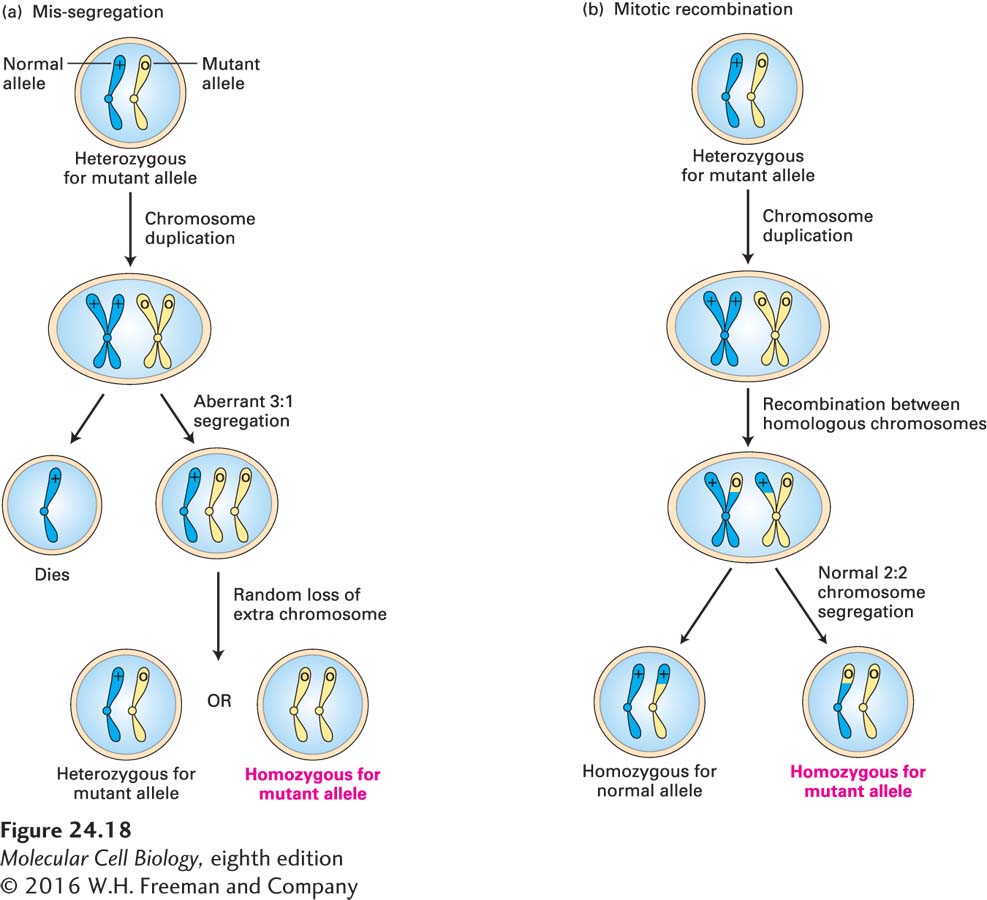
FIGURE 24- 18 Two mechanisms for loss of heterozygosity (LOH) of tumor- suppressor genes. A cell containing one normal and one mutant allele of a tumor- suppressor gene is generally phenotypically normal. (a) If formation of the mitotic spindle is defective, then the duplicated chromosomes bearing the normal and mutant alleles may segregate in an aberrant 3:1 ratio. A daughter cell that receives three chromosomes of a type can lose one, restoring the normal 2n chromosome number. Sometimes the resultant cell will contain one normal and one mutant allele, but sometimes it will be homozygous for the mutant allele. Such aneuploidy (abnormal chromosome constitution) is generally damaging or lethal to relatively undifferentiated cells that have to develop into the many complex structures of an organism, but can often be tolerated in clones of cells that have limited fates and duties. (b) Mitotic recombination between a chromosome with a wild- type and a mutant allele, followed by chromosome segregation, can produce a cell that contains two copies of the mutant allele.
[Leave] [Close]